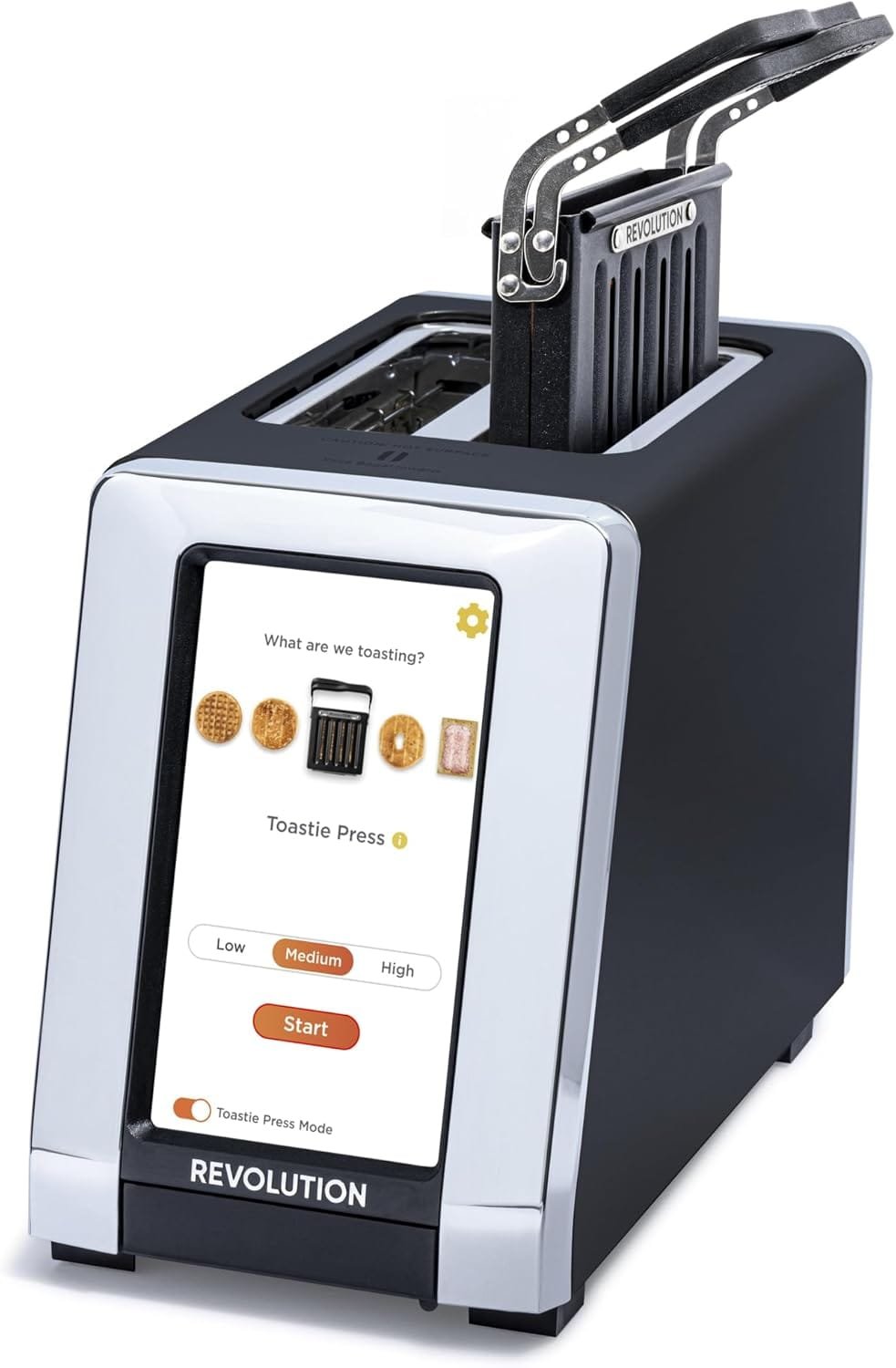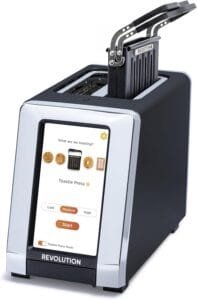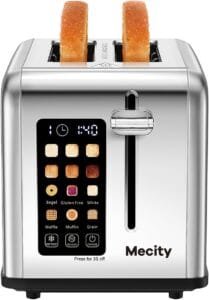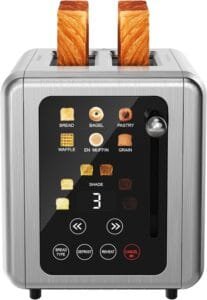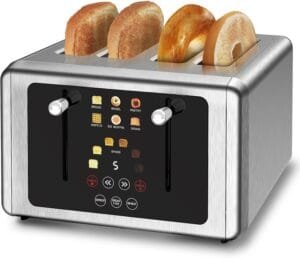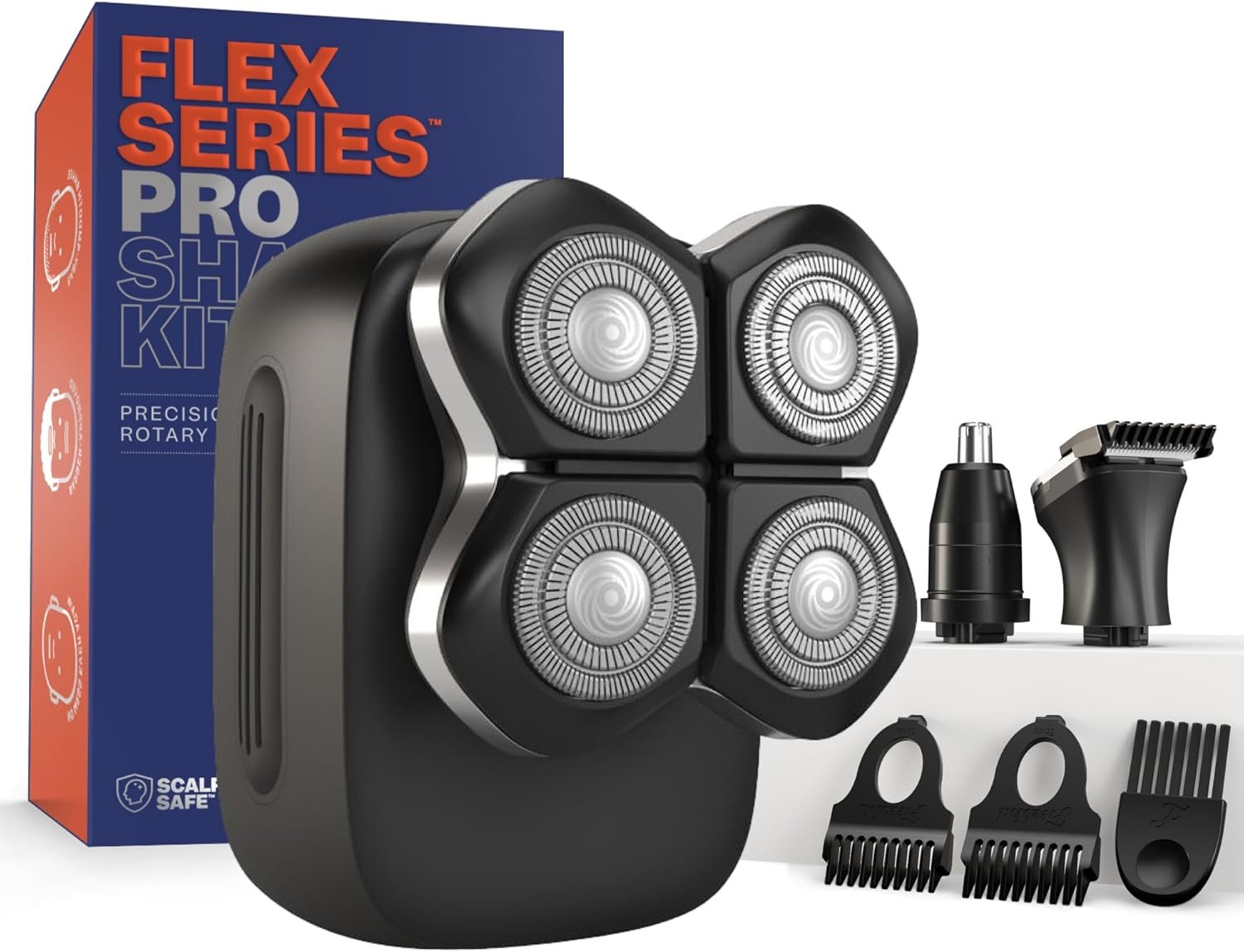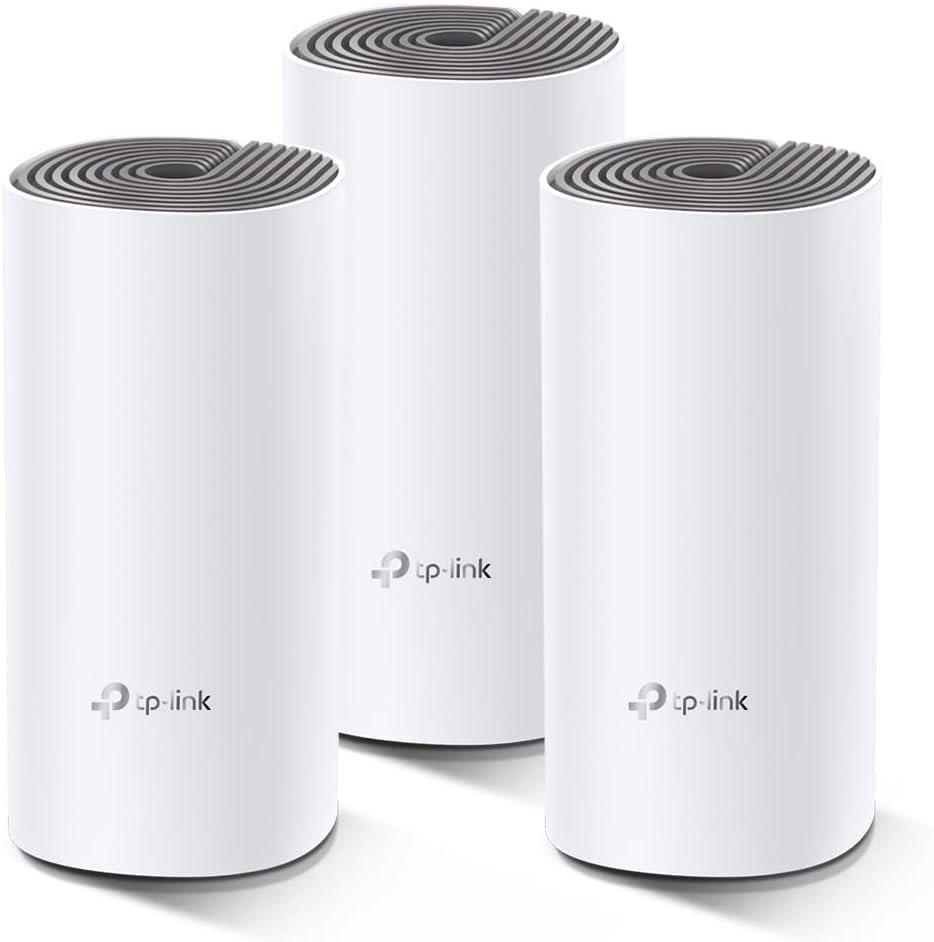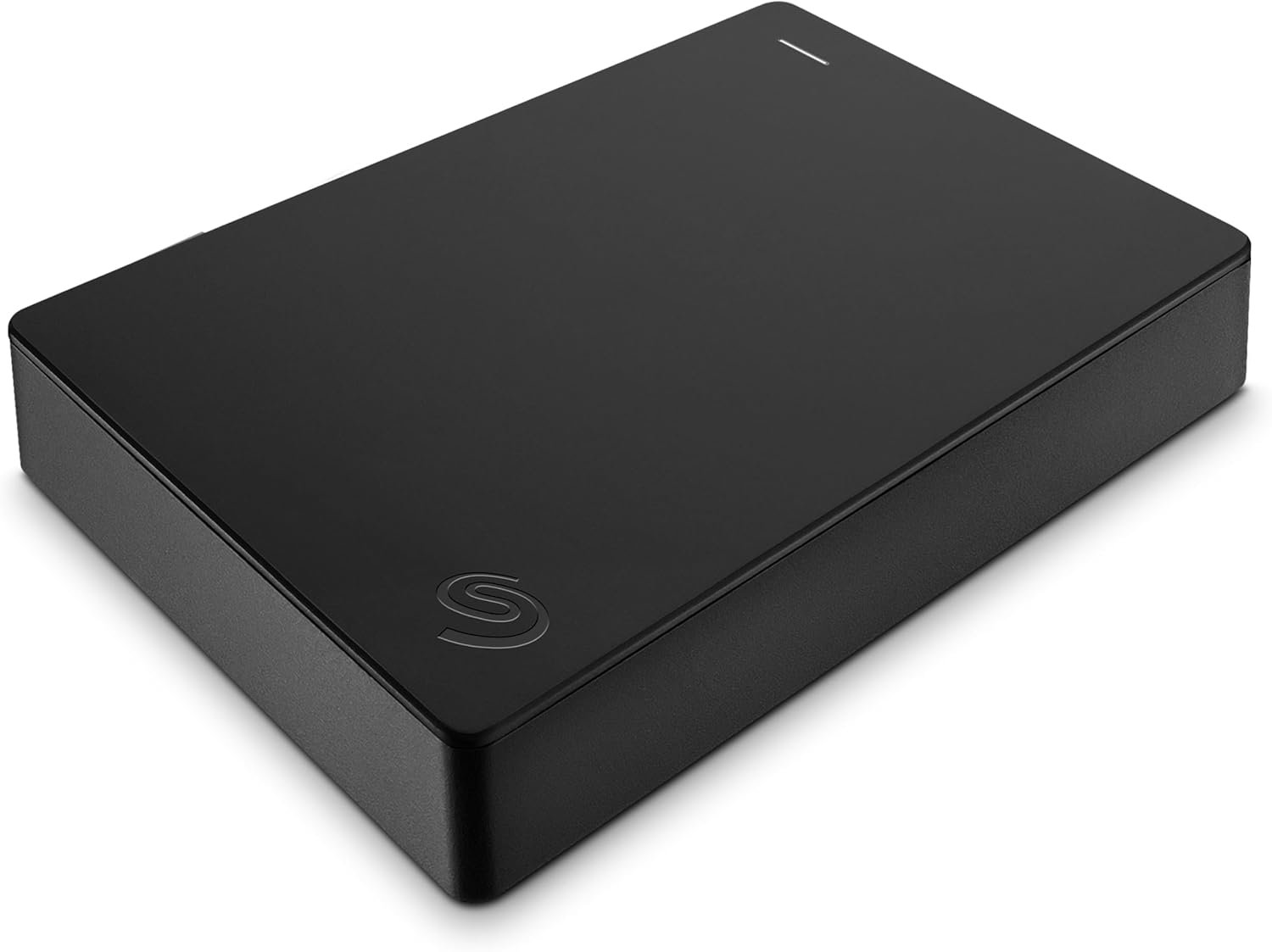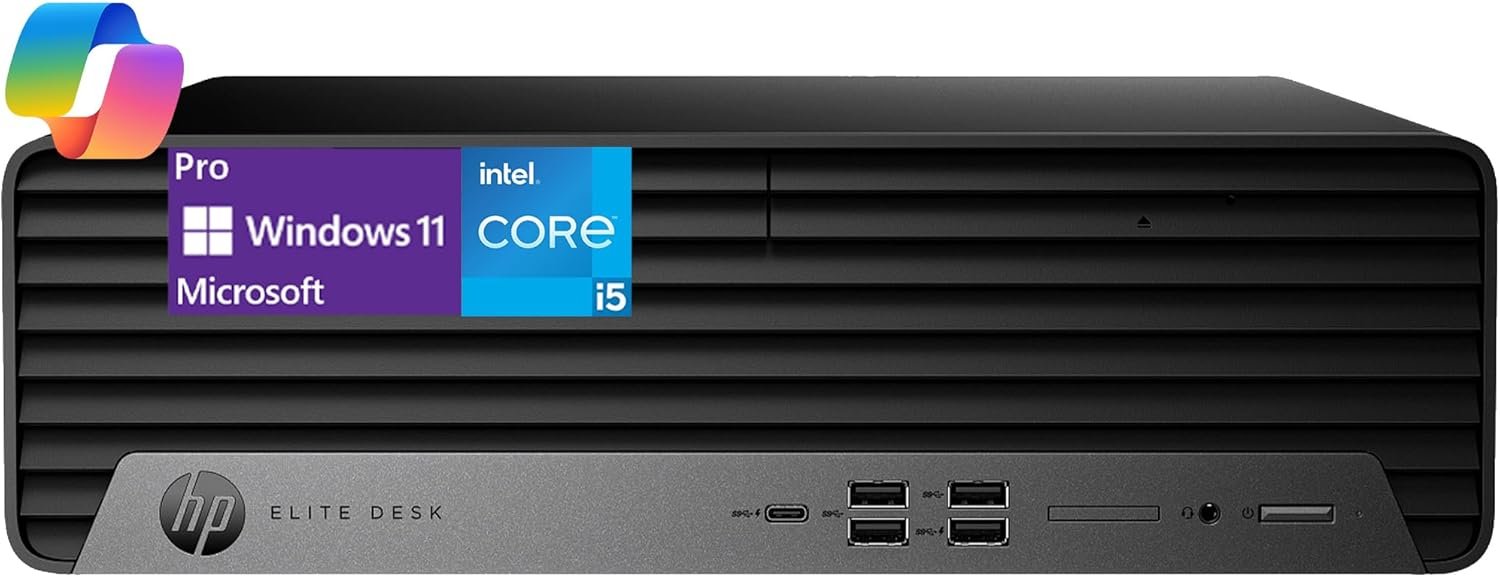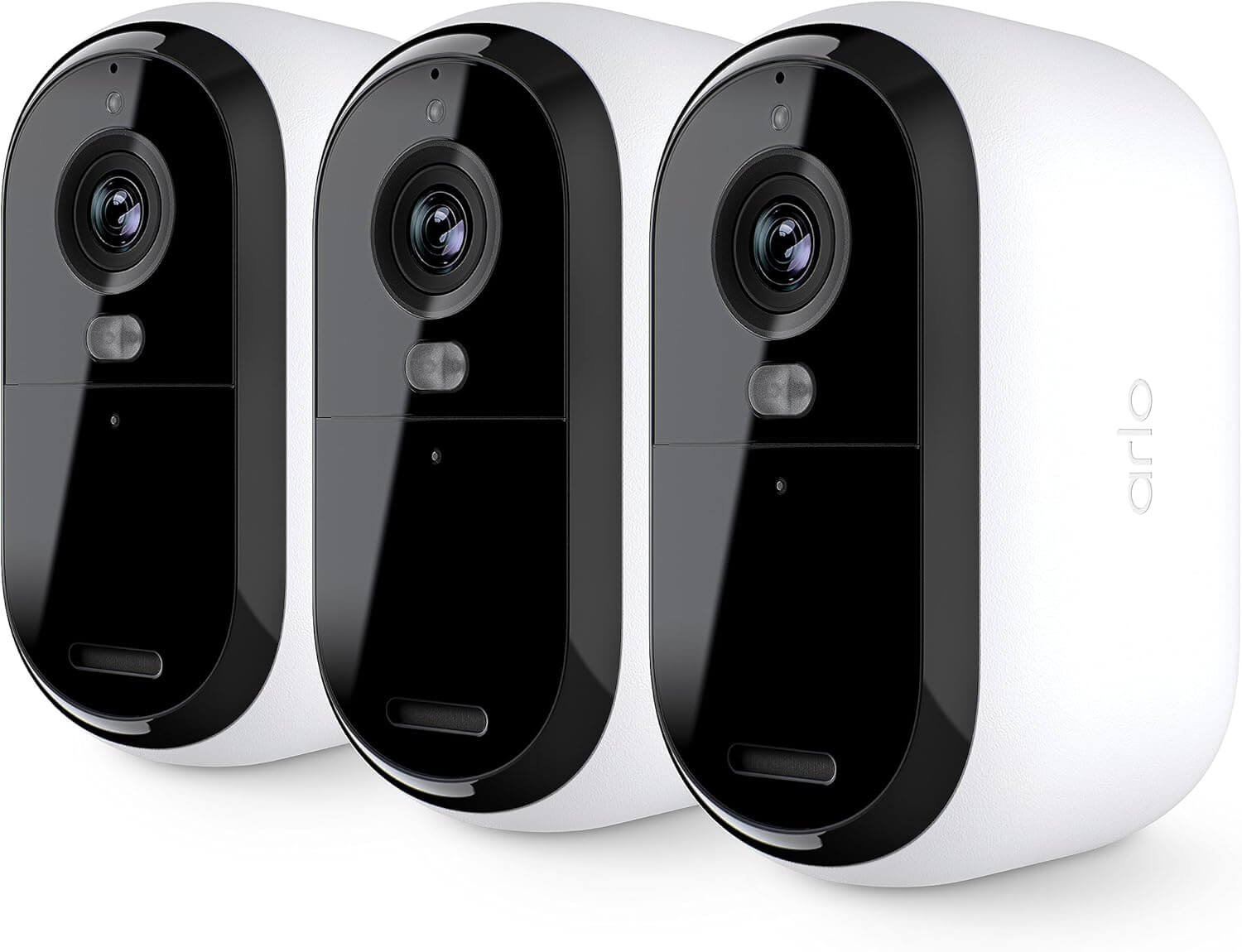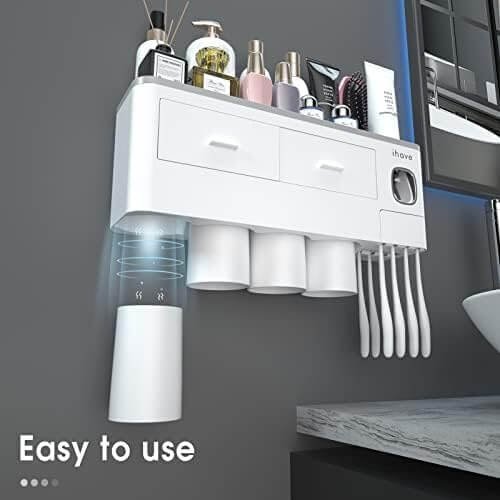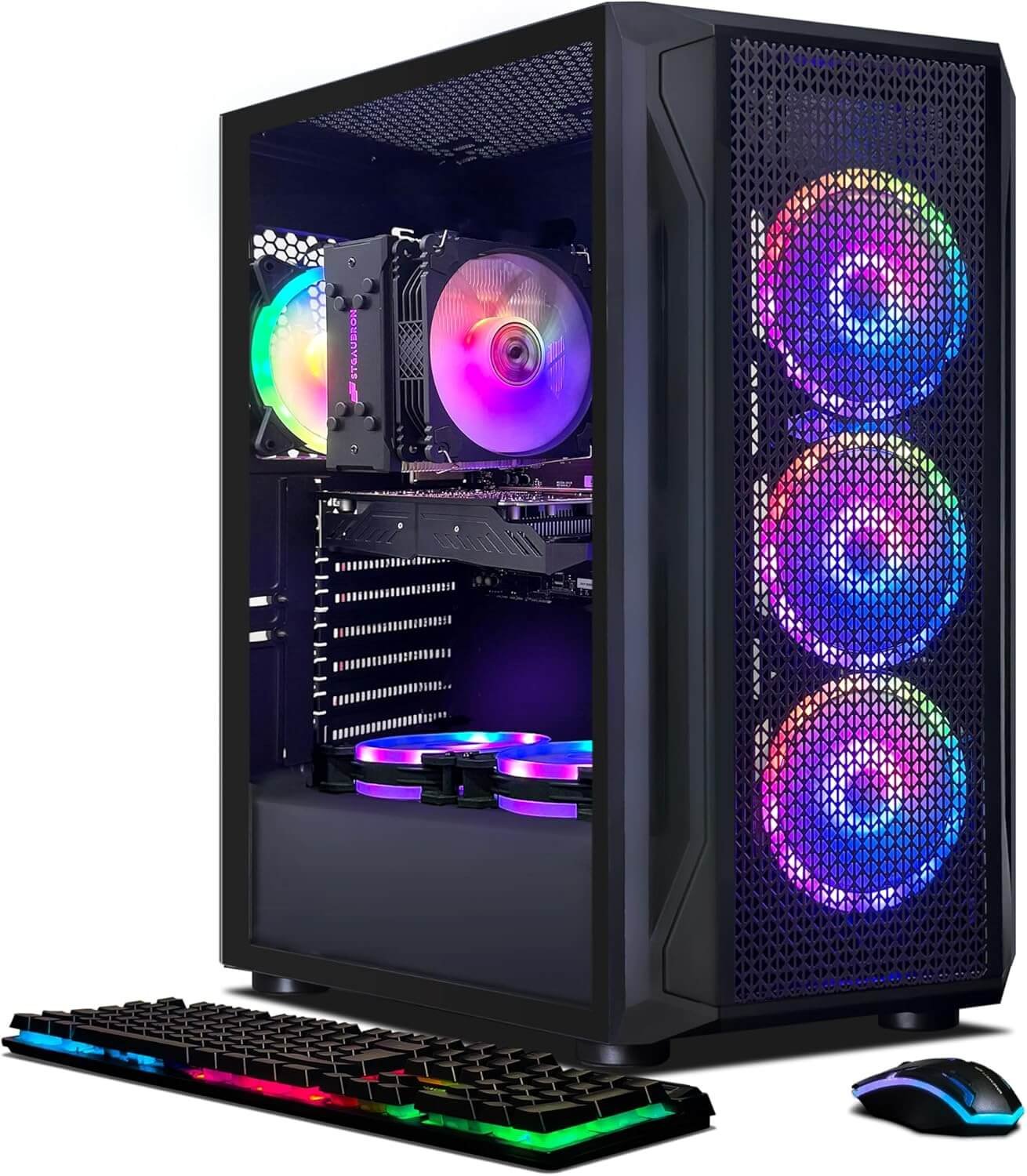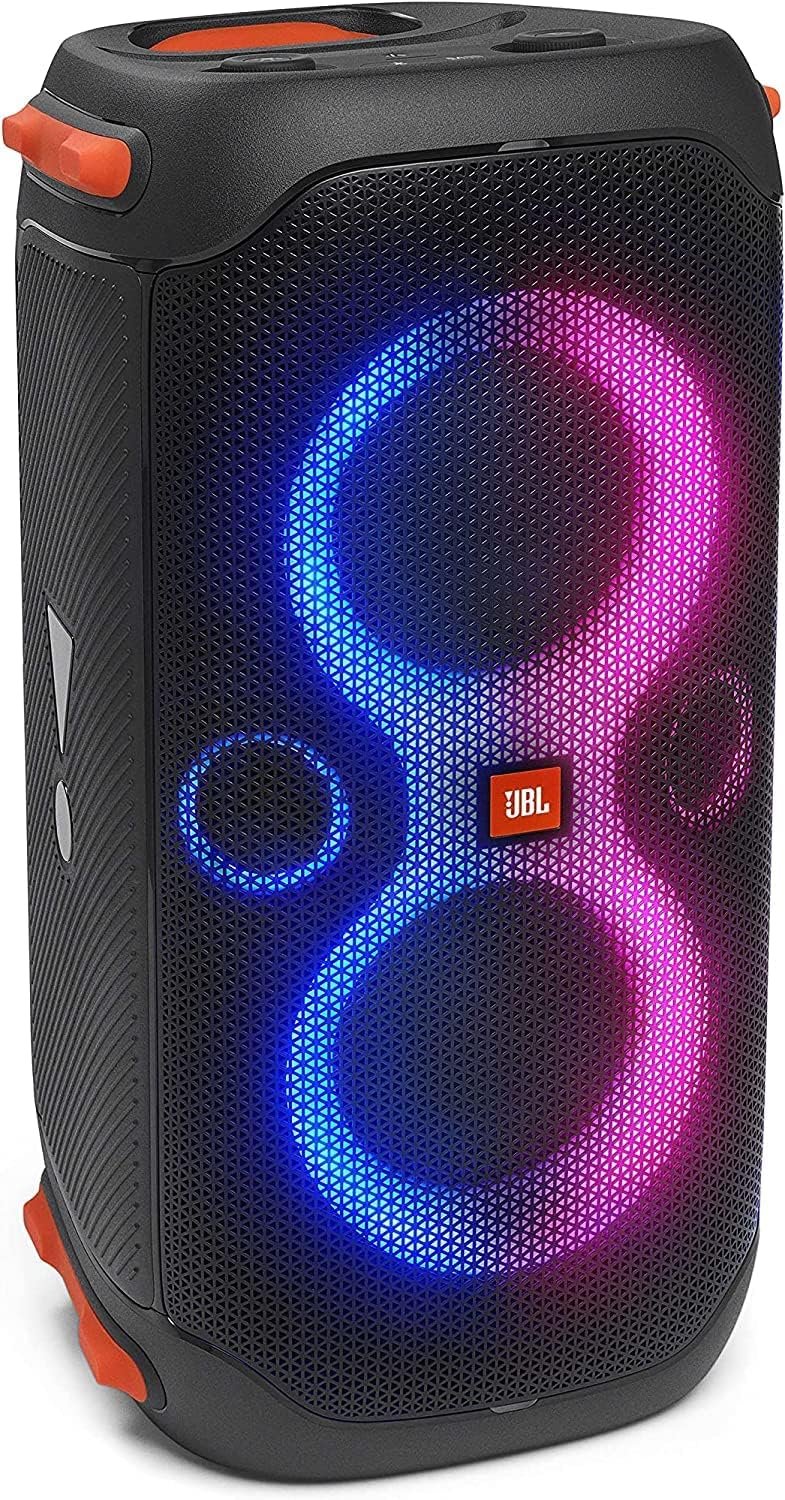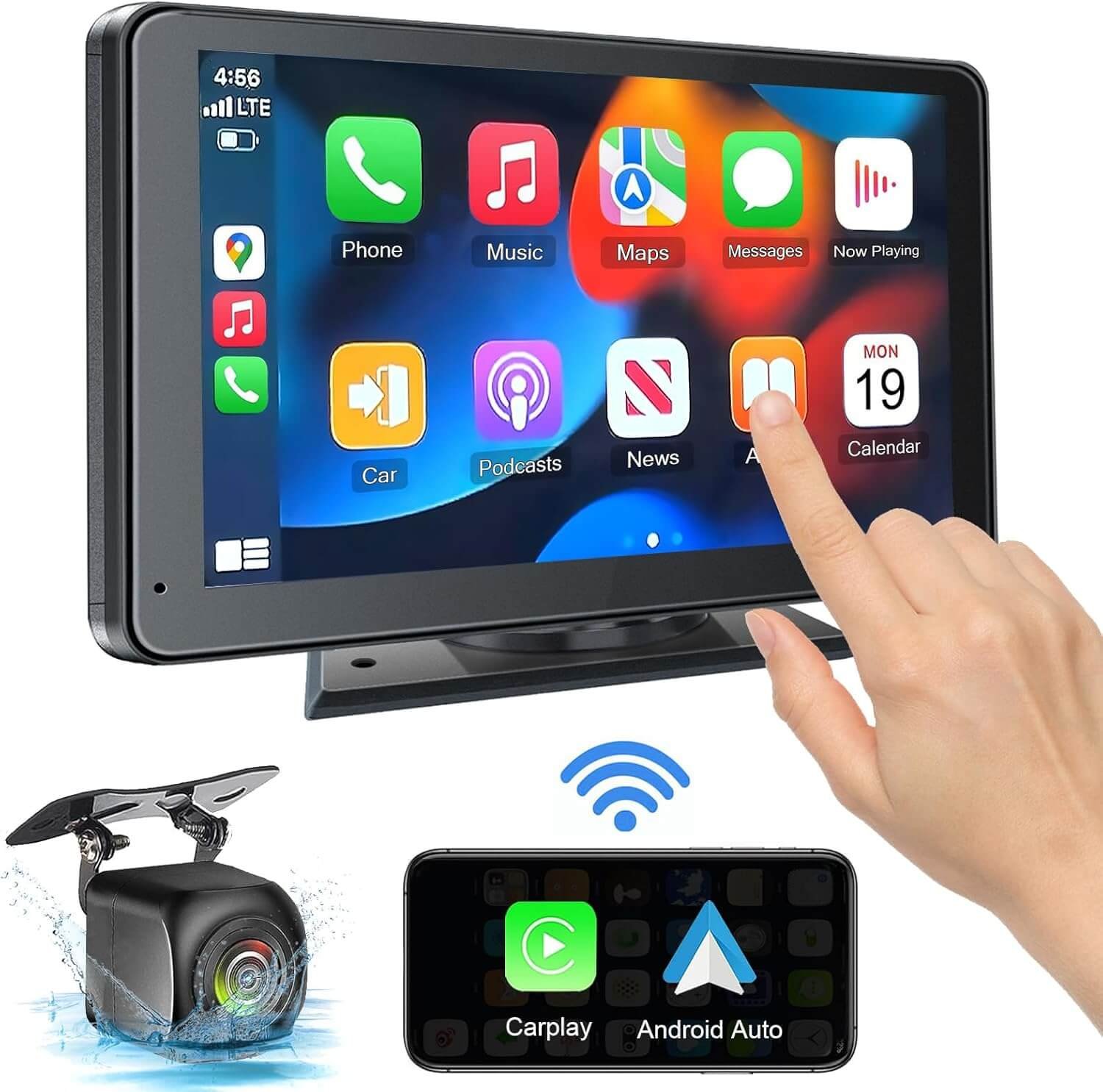Introduction to Smart Toasters
The evolution of kitchen appliances has taken a noteworthy turn with the advent of smart toasters, a modern iteration of the traditional toaster. These devices, once simply used for browning bread and warming pastries, have transformed into sophisticated appliances that cater to the needs of today’s tech-savvy consumers. The fundamental purpose of a toaster has always been to provide a quick and efficient means of preparing breakfast; however, advancements in technology have exponentially expanded this functionality.
Initially, toasters were basic appliances with mechanical timers and simple heating elements that relied on passive operations. Users manually monitored their toasting preferences, often leading to burnt or unevenly toasted bread. The introduction of automatic pop-up mechanisms allowed for a greater degree of convenience. Over the years, toasters have undergone a significant transformation, incorporating features such as adjustable browning levels and even additional functions for bagels and frozen items.
Smart toasters represent the merger of traditional appliance functionality with cutting-edge technology. They typically come equipped with Wi-Fi connectivity, touch screens, and apps that allow consumers to control their toasting experience remotely. This evolution underscores a shift in user expectations, as individuals seek appliances that not only perform tasks but also integrate seamlessly with their smart home ecosystems. With features like customizable toasting profiles and built-in sensors that guarantee the desired level of crispness, smart toasters cater to a variety of preferences.
Ultimately, the rise of smart toasters reflects broader trends in kitchen technology, highlighting the increasing role of connectivity and automation in the culinary space. As these innovative appliances gain traction in households, they are not only redefining breakfast preparation but also paving the way for future advancements in kitchen devices.
Key Features of Smart Toasters
Smart toasters are revolutionizing breakfast time by incorporating technology that enhances the toasting experience. One of the most significant features of smart toasters is their connectivity options, which typically include Wi-Fi and Bluetooth capabilities. These allow users to connect their toasters to a smart home network or directly to their smartphones, enabling control and customization through dedicated applications. Such connectivity brings a level of convenience that traditional toasters simply cannot match.
Furthermore, app integration is a standout feature of these modern appliances. With companion apps, users can access a variety of functionalities that elevate their toasting experience. This includes preset toasting profiles for different types of bread, detailed browning control, and even the ability to save personal preferences for future use. This level of customization caters to individual tastes and dietary needs, which adds a personalized touch to breakfast routines.
The advanced heating technologies incorporated in smart toasters significantly improve their performance. Many models utilize infrared heating elements or convection heating, allowing for more even toasting and the capacity to toast various types of bread, bagels, or pastries. This precision in the toasting process ensures that bread is not just uniformly browned but also retains optimal moisture and texture.
Moreover, some smart toasters come equipped with smart sensors that detect the type and thickness of bread, automatically adjusting the toasting duration to achieve the desired finish. This feature eliminates the guesswork traditionally associated with toasting, allowing users to enjoy perfectly toasted bread every time. Collectively, these key features highlight how smart toasters are not only more functional than their predecessors but also offer an improved, interactive breakfast experience for users.
Comparison with Traditional Toasters
When examining the evolution of kitchen appliances, the contrast between traditional toasters and smart toasters becomes especially significant. Traditional toasters primarily focus on basic functionalities: browning bread, bagels, and other breakfast items. These appliances typically feature a simple interface with limited settings for crispness levels and toast type. While effective for everyday use, traditional toasters lack the adaptability and precision found in their smart counterparts. In contrast, smart toasters integrate advanced technology, enabling users to customize toasting preferences via smartphone applications. This adaptability greatly enhances the breakfast experience.
Another notable difference between the two types of toasters lies in their design and aesthetics. Traditional toasters often come in standard shapes and colors, with few options for personalization. Smart toasters, however, provide a range of modern designs and finishes, appealing to contemporary kitchen styles. Furthermore, many smart toasters are equipped with features such as LED screens, touch-sensitive controls, and even built-in sensors to detect the thickness of the bread, ensuring optimal toasting outcomes. These design elements not only improve functionality but also contribute to the overall user experience.
Ease of use is another important factor separating smart toasters from traditional models. Users of smart toasters can enjoy seamless operation, often controlling their devices from their smartphones or smart home systems. This convenience allows for precise adjustments and monitoring from a distance—something traditional toasters simply cannot offer. However, this advanced ease of use comes at a price. Smart toasters are generally more expensive than traditional models, reflecting the added technology and features. While some may argue that the higher price point does not justify the additional functions, the advantages brought by smart toasters may outweigh the initial investment for many users.
Usability and Convenience
The emergence of smart toasters has redefined the breakfast experience, particularly in the realms of usability and convenience. One of the most prominent features of these innovative kitchen appliances is voice control. With the integration of smart technology, users can operate their toasters hands-free, allowing for a seamless cooking process while multitasking in the kitchen. This functionality not only enhances efficiency but also makes the user experience more accessible, especially for those with mobility challenges.
Automated cooking settings are another pivotal advancement that contributes to convenience in smart toasters. These devices come equipped with a variety of customizable options that allow users to choose specific browning levels, cooking times, and even types of bread. As a result, individuals can enjoy consistent and perfectly toasted slices without the need for constant monitoring. This automation reduces the likelihood of burnt toast and encourages users to explore various options, from bagels to artisan breads, broadening breakfast possibilities.
Furthermore, the ability to operate smart toasters remotely via mobile applications exemplifies how technology enhances everyday routines. Users can set their toasters to preheat while they are getting ready in the morning, ensuring that breakfast is prepared precisely when needed. Additionally, many apps provide users with monitoring capabilities, allowing them to know when their toast is ready, even if they are in another room. This combination of technology and culinary artistry perfectly illustrates how smart toasters promote efficiency while catering to the modern lifestyle, making them an invaluable addition to any kitchen.
Cost Analysis: Are They Worth the Investment?
The emergence of smart toasters represents a significant shift in kitchen technology, prompting consumers to evaluate whether these modern appliances justify their higher price when set against traditional models. Traditional toasters generally range from $20 to $50, while smart toasters typically cost between $100 and $300, depending on their features and brand reputation. The increased investment in smart toasters often comes with enhanced functionalities such as customizable toasting settings, smartphone connectivity, and integrated cooking algorithms. These capabilities can enhance user experience and efficiency, particularly for busy individuals who seek the convenience of automated cooking.
Key factors contributing to the higher cost of smart toasters include advanced technology, design quality, and brand positioning. Many smart toasters incorporate sensors and AI-driven features that allow users to achieve consistent results tailored to personal preferences. The technology employed often necessitates more complex manufacturing processes, which invariably heightens production costs. Furthermore, the manufacturers position these appliances as premium products, tapping into a market willing to pay more for innovation and convenience.
However, whether these advanced features translate to good value for money remains debatable. Users who frequently prepare breakfast may find smart toasters beneficial due to their time-saving aspects and adaptability to diverse food types. On the other hand, individuals who solely use a toaster for simple tasks may find traditional models sufficient for their needs. Ultimately, consumers should establish their specific cooking habits and weigh the potential benefits against the higher expenditure. The investment in a smart toaster may indeed be justified for those eager to embrace automation in their breakfast routine; nevertheless, it may not be as enticing for more casual users of the appliance.
Consumer Opinions and Reviews
The advent of smart toasters has largely generated a positive reception among consumers, who appreciate the enhanced functionality and convenience these appliances offer. Many users highlight the ability to customize browning levels and create innovative toasting settings that traditional toasters simply cannot accommodate. The integration of smart technology allows users to control their toasters from their smartphones, making breakfast preparation more efficient. Reviewers often commend the convenience of this feature, especially for busy individuals who may find themselves multitasking in the morning.
However, there is also a segment of consumers who voice concerns regarding the cost of smart toasters. While many applaud the technological advancements, some feel that the premium price tag does not justify the benefits. A common complaint revolves around the complexity of use; several users report that they encountered a steep learning curve when adapting to the array of features. For example, some find that connection to Wi-Fi or configuring the accompanying app can be cumbersome tasks that may discourage novice users. In these instances, traditional toasters are regarded as simpler and more reliable options.
Another important observation from consumer reviews is the aspect of durability. Many users express expectations for high performance and longevity from their smart toasters. Positive sentiments abound regarding build quality, yet there are reports of malfunctions or glitches that some consumers have experienced after a short period. Consequently, while smart toasters attract accolades for their innovative capabilities, some users suggest a cautious approach, urging potential buyers to weigh the benefits of advanced features against factors like cost and durability.
Potential Drawbacks of Smart Toasters
The emergence of smart toasters has indeed made breakfast preparation more convenient; however, there are some potential drawbacks that users should consider before making a purchase. One significant issue is the increasing reliance on technology. As household appliances evolve into smart devices, the simplicity of tasks has diminished. This can lead to frustration, especially for those who are not technologically savvy. A traditional toaster requires minimal interaction—just set the dial and press down. In contrast, a smart toaster typically requires a smartphone app or Wi-Fi connection, which might prove cumbersome for some users.
Another concern is the occurrence of software bugs. As with any smart technology, smart toasters may experience glitches. These bugs can hinder functionality, leaving users unable to toast their bread effectively or requiring them to reset the device. Such technical issues undermine the efficiency that smart toasters promise to deliver, potentially causing inconvenience during busy mornings.
Connectivity issues pose a further complication. Smart toasters rely on stable Wi-Fi connections to access features and updates. Interruption in internet service can render the appliance practically useless, which stands in stark contrast to traditional toasters that operate independently of any external system. Moreover, if the manufacturer discontinues support for an app or firmware updates, the smart toaster may become obsolete, limiting its usefulness.
Lastly, the introduction of complex features can lead to over-complication in a process that was once straightforward. Consumers may find themselves overwhelmed by the numerous settings and options available, detracting from the overall purpose of a toaster: to make breakfast faster and simpler. Therefore, it is essential to weigh these potential drawbacks against the advantages when considering the adoption of a smart toaster.
The Future of Toasters: Trends and Innovations
The evolution of kitchen appliances, particularly toasters, is witnessing remarkable advancements driven by emerging technologies and changing consumer preferences. Smart toasters, equipped with technological innovations, stand at the forefront of this transformative wave. The integration of IoT (Internet of Things) capabilities allows toasters to connect to home networks, enabling users to control their devices remotely through smartphone applications. This connectivity facilitates personalized settings and real-time monitoring of the toasting process, contributing to an enhanced breakfast experience.
Additionally, advancements in artificial intelligence (AI) are poised to revolutionize toaster functionality. Future models may characterize themselves by adaptive heating mechanisms that learn from user habits, optimizing toasting time and temperature for consistent results. By employing machine learning algorithms, smart toasters could potentially suggest recipes or ideal settings based on individual preferences. This not only simplifies the cooking process but also elevates the quality of the food prepared.
Sustainability considerations are equally significant as the demand for environmentally friendly products increases. Future toasters may incorporate energy-efficient technologies, such as solar power integration, which would minimize energy consumption and reduce ecological footprints. Manufacturers are likely to explore recyclable materials for toaster construction, thereby aligning with growing consumer awareness regarding environmental responsibility. Furthermore, as the recycling of electronics becomes more critical, toasters designed for longevity and repairability will gain traction.
In the context of these innovations, the potential for smart toasters extends into the realms of health and wellness. Future models may incorporate features that cater specifically to nutritional needs, enabling users to track caloric intake or suggest healthier bread options. As technology and sustainability intertwine, the future of toasters appears promising, marked by a trend toward greater versatility, efficiency, and alignment with modern lifestyles.
Conclusion: Smart Toasters in Today’s Kitchen
In recent years, smart toasters have emerged as a notable innovation in the realm of kitchen appliances, capturing the attention of tech-savvy home cooks and breakfast enthusiasts alike. These devices go beyond the simple task of toasting bread; they are equipped with advanced features such as customizable toasting settings, smartphone connectivity, and even sensors that ensure optimal browning based on the type of bread used. The integration of technology into everyday cooking tasks highlights the growing trend towards automation in kitchens, allowing users to enjoy a more streamlined cooking experience.
The convenience offered by smart toasters is undeniable. With the ability to control toast settings remotely through a smartphone app, users can prepare breakfast while multitasking, enhancing the overall efficiency of morning routines. Additionally, the precise toasting capabilities help in achieving consistent results, which can lead to a more enjoyable dining experience. Features like preset programs for bagels, gluten-free bread, or English muffins showcase the versatility of smart toasters, making them suitable for various dietary preferences.
However, one must also consider the practicality and worth of investing in a smart toaster. While they provide modern upgrades to a fundamental kitchen appliance, some may view them as an unnecessary luxury amid the array of traditional toasters available at more accessible price points. Ultimately, whether a smart toaster is a worthwhile investment depends on individual cooking habits, lifestyle, and personal preferences. For those who value technological advancements and are willing to embrace innovations in cooking, these smart appliances could prove beneficial. Conversely, for users who prefer simplicity and low-maintenance tools, traditional toasters may still hold relevance in today’s kitchen. As the utility of smart toasters continues to evolve, they stand as a testament to the potential future of cooking technology.

